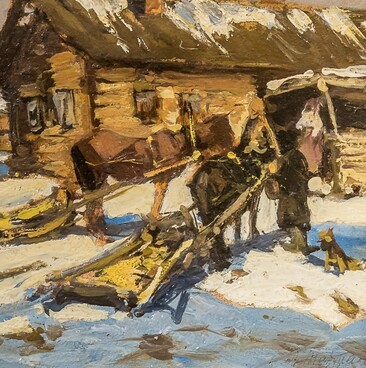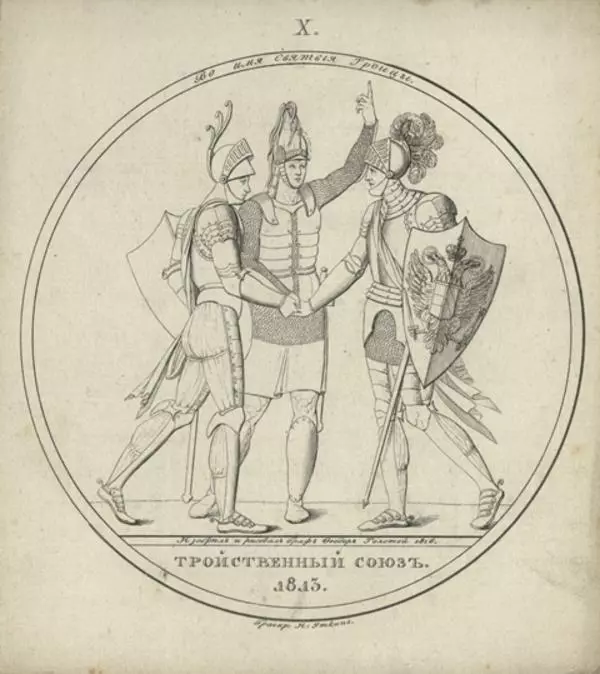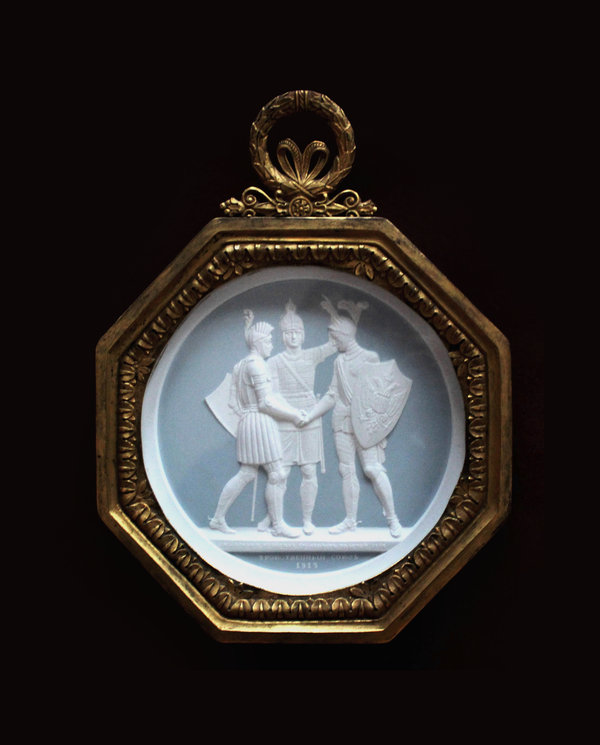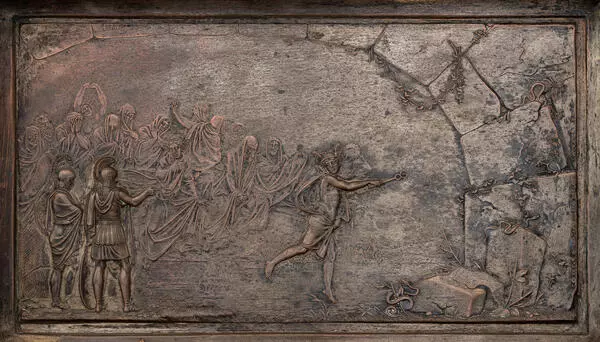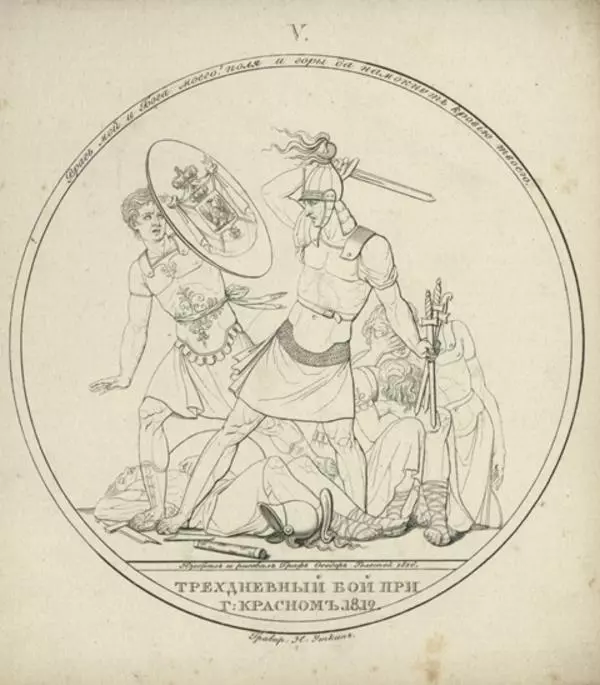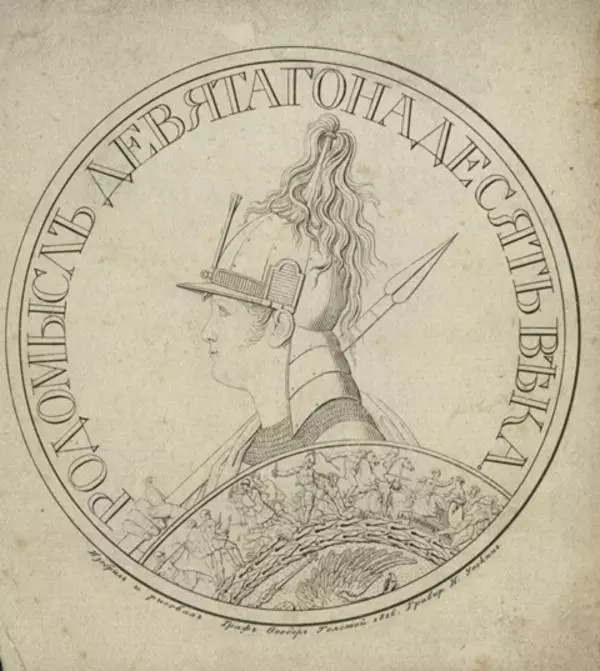Fyodor Petrovich Tolstoy was a sculptor, medalist, painter, draftsman, scene painter and master of silhouette.
The bas-relief “Penelope’s Suitors Feast in Odysseus’ Palace” takes the viewer to a luxurious palace, with walls adorned by paintings and draperies.
In the center, around a table laden with viands, Penelope’s suitors lie on a bed. One of them holds out a goblet to a woman standing next to him, ready to fill it with wine. Others at the table sit embraced, engaged in a conversation; they seem already drunk, with their slow movements and faltering gestures. There are servants carrying wine and food to satisfy the suitors’ endless demands.
In the left part of the bas-relief, King Mentes sits at a separate table with young Telemachus standing next to him, and the two are engaged in a heated conversation. It is as if Tolstoy deliberately isolated them from the wildly celebrating party by placing servants setting the table for the dear guests. In the right part of the bas-relief, the intoxicated suitors sit on the bed listening to Phemius sing and play the kithara. A warrior in a helmet, enthralled by the music, leans on the pedestal with a vase.
The bas-relief shows many figures of people, all seen moving differently from a variety of surprising angles, which does not affect the well-thought composition. It is balanced and thorough and consists of three independent parts, united by a single narrative.
The isolated personalities alternate with the multi-figured groups, the dynamic figures contrast with the static ones, some are standing, while others are lying or sitting. This deliberately disturbed symmetry and disproportionate arrangement of the pictorial space save the composition from being monotonous and enliven the whole scene.
In terms of composition, the plot of the bas-relief is enclosed on the right and left by symmetrical images: on the right, there are the seated singer Phemius and the warrior bending over him, on the left are seated Athena impersonating King Mentes and Telemachus tilting his head to her side. Behind the column is an arch with a view of the mountain landscape; a slave is at the entrance, doing some household chores.
The characters are psychologically complex and varied. The bas-relief presents a range of human emotions — from the exuberant and unbridled reveling of the suitors to the quiet sadness of Telemachus. Some are in the grip of bacchanalian frenzy, while others are immersed in deep thought (from the book “Fyodor Petrovich Tolstoy” by Era Kuznetsova).

